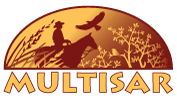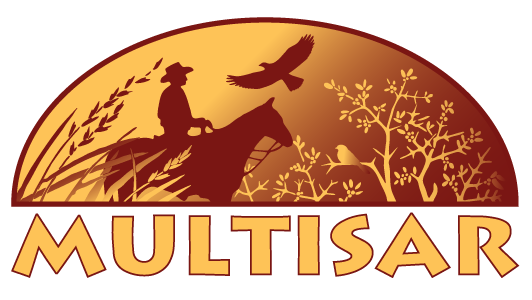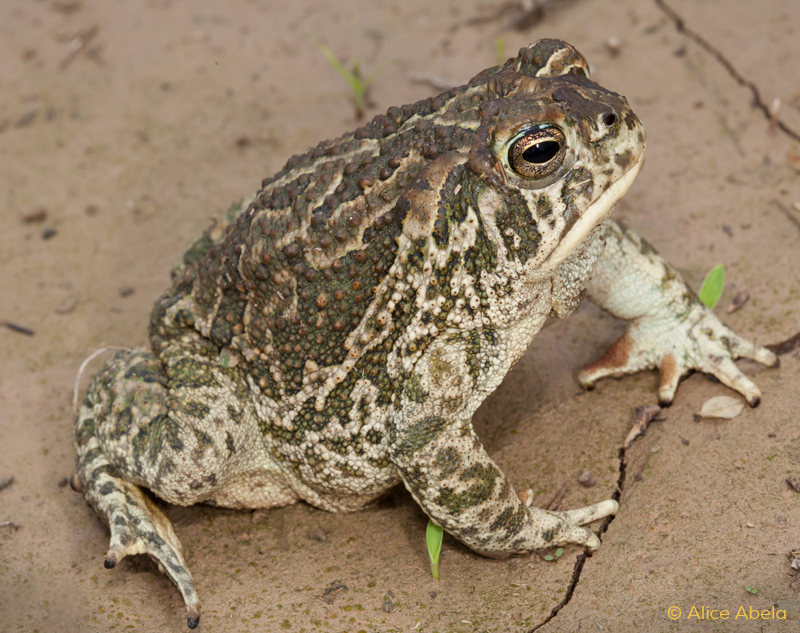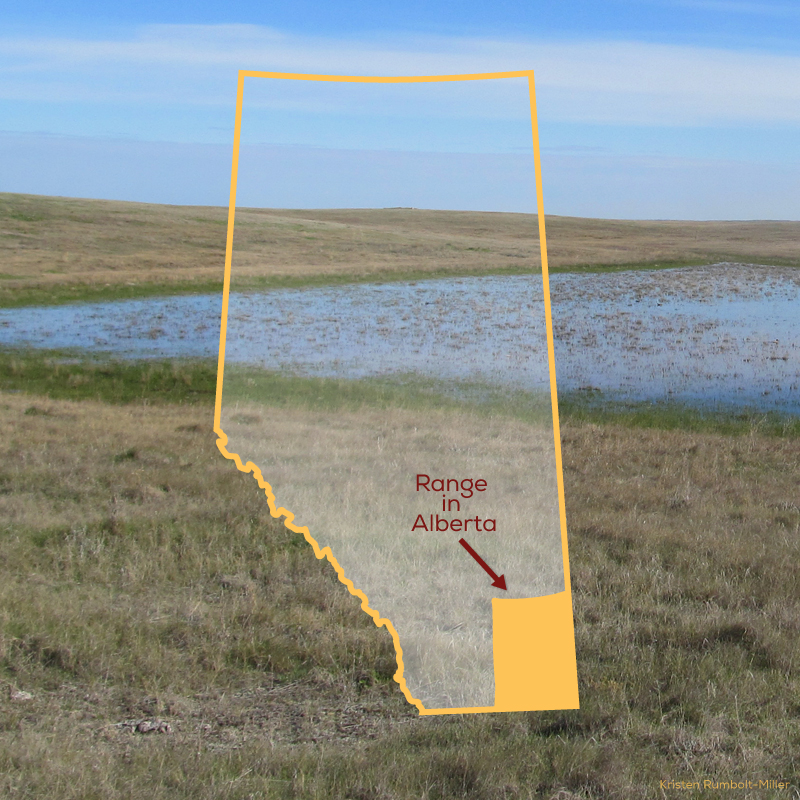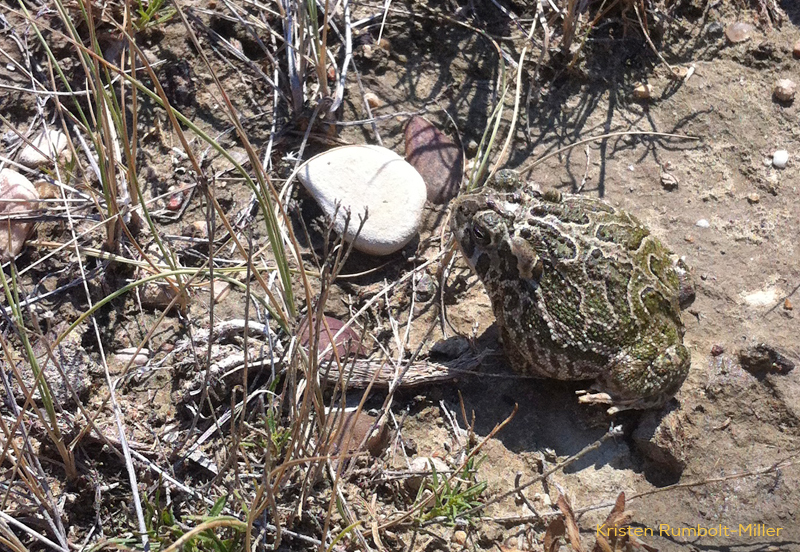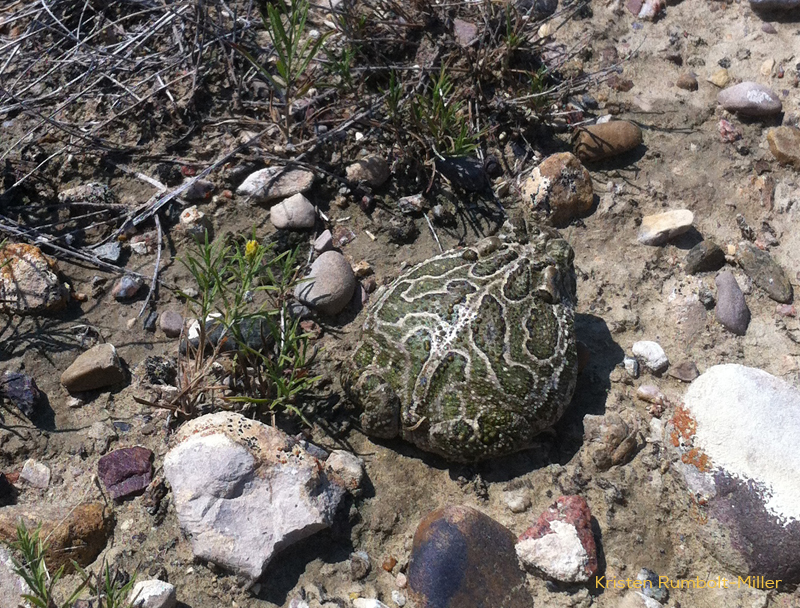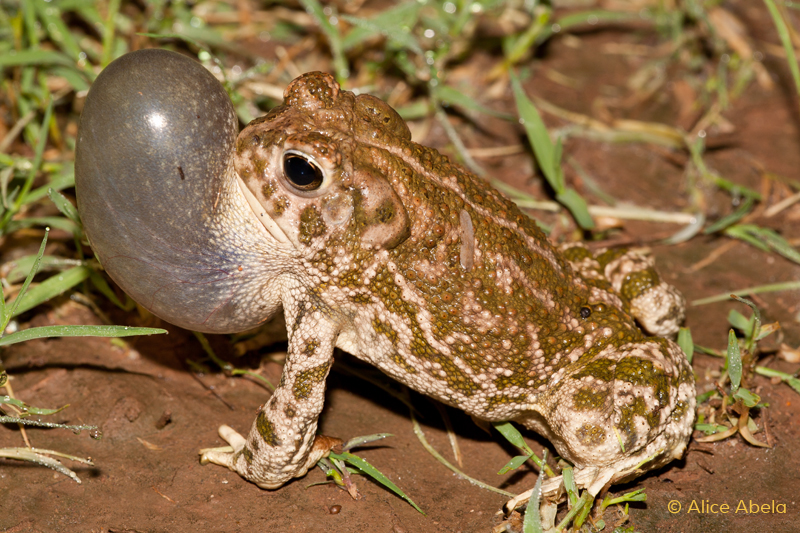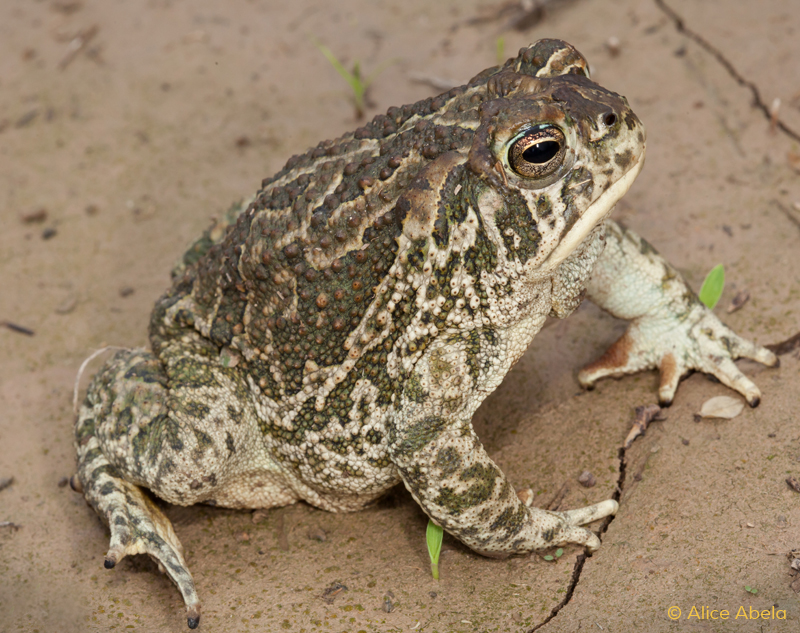Great Plains Toad
Anaxyrus cognatus
Habitat:
Forage and hibernate in native grasslands with loose soil. Breed mainly in temporary ponds, but also in permanent ponds, ditches and other flooded areas.
A Bump on the Head
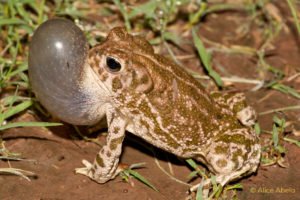
Great Plains Toads can be identified by their distinctive cranial crests.
These large toads are not easy to find, but if you see one, they can be identified by their distinctive L-shaped ridges or “bumps” behind each eye that join in the center of their head.
A Raucous Chorus
When large numbers of males are all calling together, their harsh jackhammer-like calls can be heard for several kilometers across the prairies.
Clean and Productive
Great Plains Toads are particular about which ponds they will breed in, preferring those with clean and clear water. A large female toad can lay up to 40,000 eggs at once. This high productivity helps the population to get through dry years when their ponds are empty and no breeding occurs.
Going Underground
Being largely nocturnal, Great Plains Toads burrow underground during hot days and feed at night. In winter they burrow deeply enough to stay below the frost line. They burrow backwards by inflating themselves and using their hind feet as a spade to move soil.
Population
The population of Great Plains Toads is scattered and isolated in Alberta, with low densities and numbers that vary from year to year, depending on weather conditions. In wet years, they become more abundant, but there is little to no reproduction in dry years.
Current Threats
- Loss of native grassland habitat. While toads will use cultivated areas, their body size and survival is lower when breeding ponds are surrounded by cropland compared to native grassland.
- Loss of breeding ponds due to draining, filling and tilling for cultivation.
- Overgrazing can lead to muddying of water bodies, making them unsuitable for Great Plains Toads.
- Pesticide use in or near breeding ponds and foraging areas.
Species@Risk Quiz
Test your knowledge about Alberta’s grassland species at risk
Great Plains Toad
Question 1 |
The call of the Great Plains Toad sounds like:
A barking dog
| |
A quacking duck | |
A jackhammer |
Question 2 |
Great Plains Toads prefer to breed in ponds that contain:
Clean and clear water
| |
Dark and murky water | |
They are not fussy and will breed in any water |
Question 3 |
Great Plains Toads avoid drying out in hot summer weather by:
Seeking shade under a shrub
| |
Burrowing into the soil | |
Sitting in rivers |
Question 4 |
The diet of an adult Great Plains Toad consists mostly of:
Ants and beetles
| |
Grasses and seeds | |
Mice and small fish | |
All of the above |
Public
- Become a volunteer for the Alberta Volunteer Amphibian Monitoring Program.
- Educate yourself and your family about this unique species and its role in the ecosystem.
- Encourage landowners that are good stewards of the land by purchasing their agricultural products.
Landowners
- Avoid tilling temporary wetlands, even in dry years, as this may decrease their ability to hold water in wet years and Great Plains Toads may be burrowed there.
- Provide alternative watering sites for cattle, such as troughs, to help keep the water in natural ponds clean.
- Avoid using pesticides and chemical fertilizers near water bodies, temporary and permanent.
- Modify dugouts to create a low shoreline gradient attractive to Great Plains Toads.
- If you have Great Plains Toads on your land, consult with a biologist to identify their habitats and learn how to balance your operational needs with the habitat needs of the toads.
- Talk to your children and neighbours about the privilege of having Great Plains Toads on your land.
- Contact MULTISAR to discuss management practices that might be beneficial to Great Plains Toads on your property.
What MULTISAR Does
- Participates in amphibian surveys in the Grassland Natural Region
- Provides information about Great Plains Toads and recommendations to landowners on how to manage land in ways that will protect and enhance their populations and habitats.
- Finds and assists in implementing habitat improvement solutions compatible with agricultural operations.
